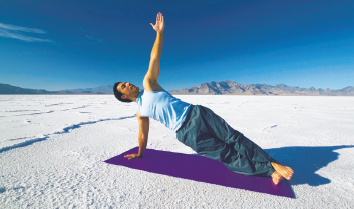
As a therapist I see many types of injuries that are associated with regular exercise classes which incorporate movements that are unusually stressful to a joint.
In this series, La Mesa Rehab identifies several exercises that age you faster than you realize. They can age you by promoting instability, arthritis, tendinitis, bursitis and chronic pain in your joints.
Shoulder Anatomy
The shoulder is the most flexible or movable joint in the body. It allows for a wide range of motion, such as reaching up, out and across and even rotating it behind the body. All these motions are important for every day activates of life. However, with this flexibility comes instability. So the shoulder is the most flexible, yet the most unstable joint in the body.
Three small bones that make up the shoulder. These bones are the upper arm bone (the humerus), the shoulder blade (the scapula) and the collarbone (the clavicle). This complex, yet fragile group of bones are held together by muscles, ligaments and tendons. This intricate joint is simply not designed for excessive and prolonged weight bearing. Repetitive and stressful activities combined with weight bearing can cause muscles to get strained and ligaments to be stretched, as well as pressure on sensitive soft tissues, like a bursa, leading to bursitis, all resulting in a painful and unstable shoulder.
The Single Arm Plank
The popular single arm plank exercise is often included in a variety of exercise classes, especially Pilates. Participants assume a sidelying position with one arm either bent at the elbow, or fully extended.
Often times class leaders instruct the participants to extend the opposite arm and even rotate their bodies, often repeatedly. So the shoulder is then rotating within the fragile capsule with the full weight of the body, compressing soft tissues and straining at where the muscles insert on the bones. This can be a leading cause of rotator cuff injuries.

How Injury Occurs
With the arm extended, and the elbow locked in place the full weight of the body is now on the shoulder complex. This weight jams the head of the humerus into the joint causing pressure on the bursa inside the joint. The bursa is a fluid filled bubble that normally acts as a shock absorber in the shoulder complex almost like a cushion. Compression on this bursa over time creates the syndrome called ‘impingement’ and can lead to bursitis. Impingement syndrome creates pain that radiates down the side of the arm, often at times all the way down to the elbow.
Repetitive jamming of the head of the humerus into the shoulder complex and the bursa will lead to swelling of the bursa as it responds with inflammation. Once this syndrome begins, it can easily last for 4-6 weeks and prevent you from doing the simplest of activities of daily life.
Overall, the shoulder is just not designed to support the full weight of the body in a rotated outward position. Continuous use of this exercise position sets you up for impingement syndrome, bursitis, as well as arthritis in that joint later in life, aging you prematurely. The double arm plank is not any better even though it distributes the weight more evenly. The pressure occurs smashing the bursa and soft tissue, the damage will still be done and pain will eventually result.
So next time you are in an exercise class that instructs you to perform a plank, simply choose another exercise to do while everyone else is working on their shoulder instability. Be smart about what exercise positions you choose to put your body into. Your body will thank you.
